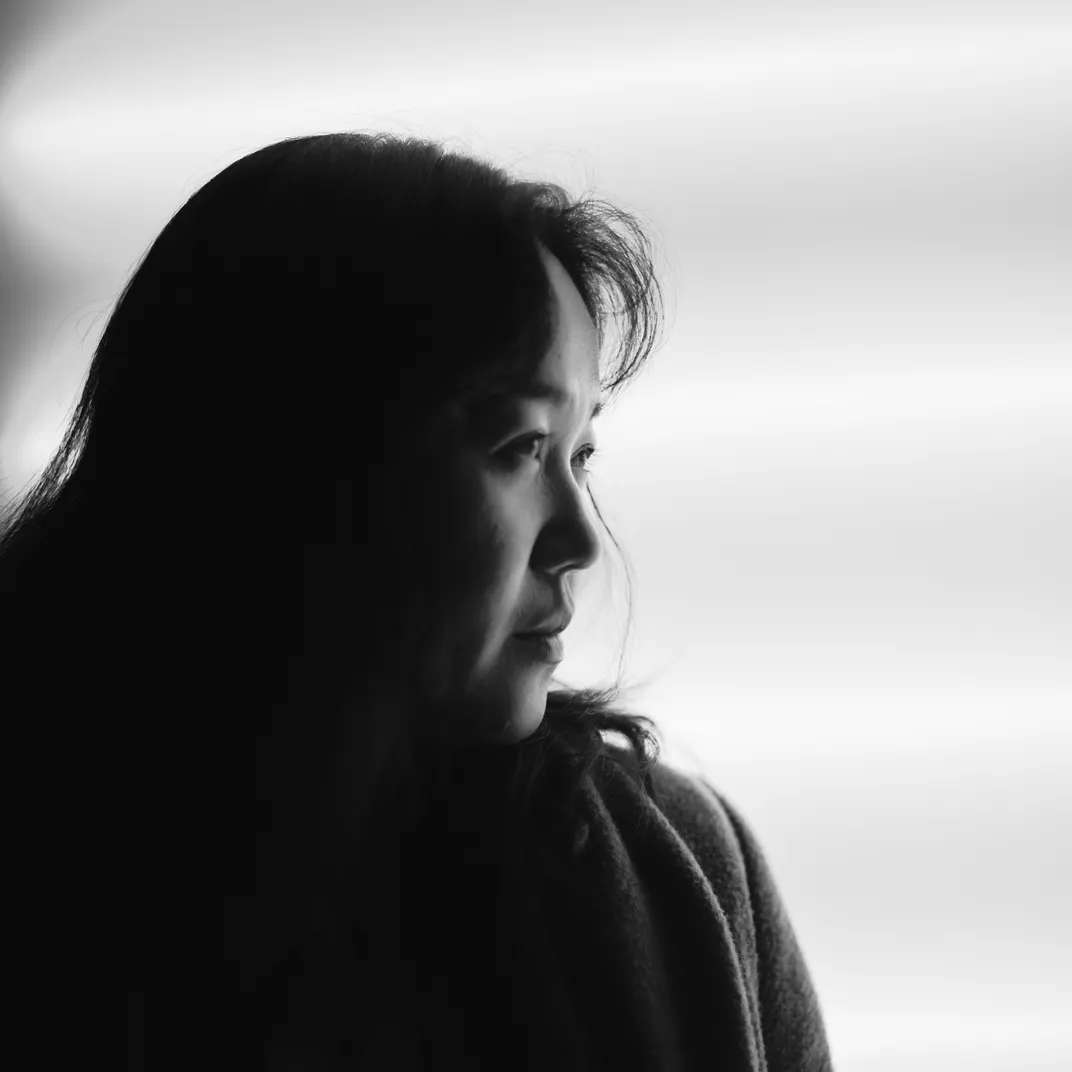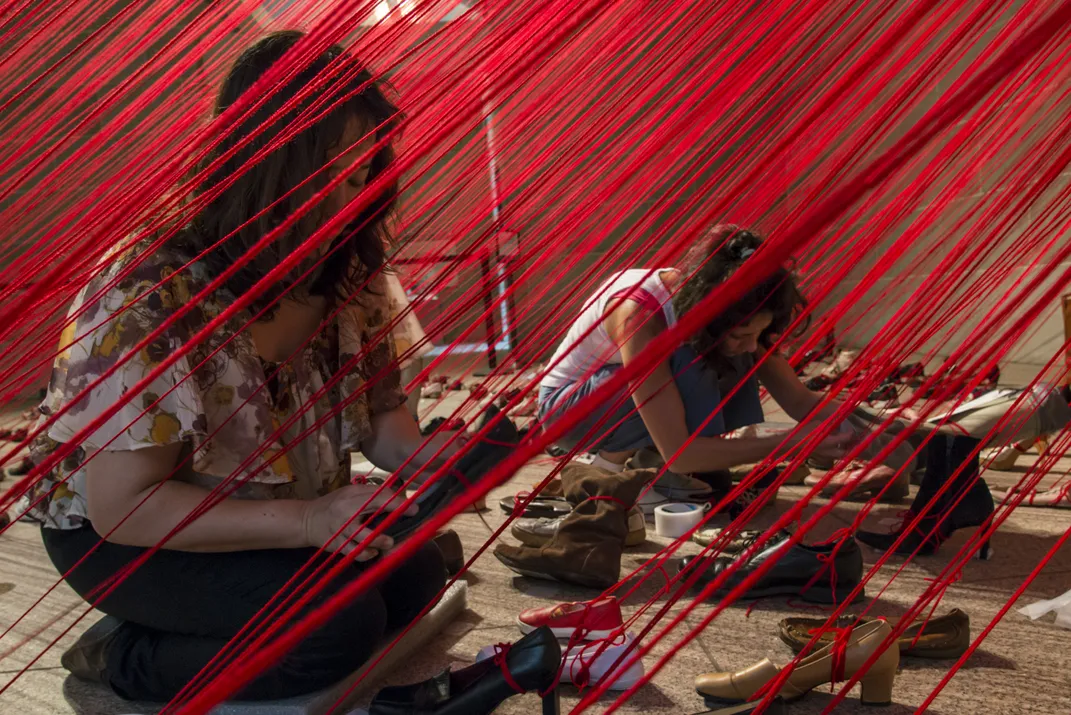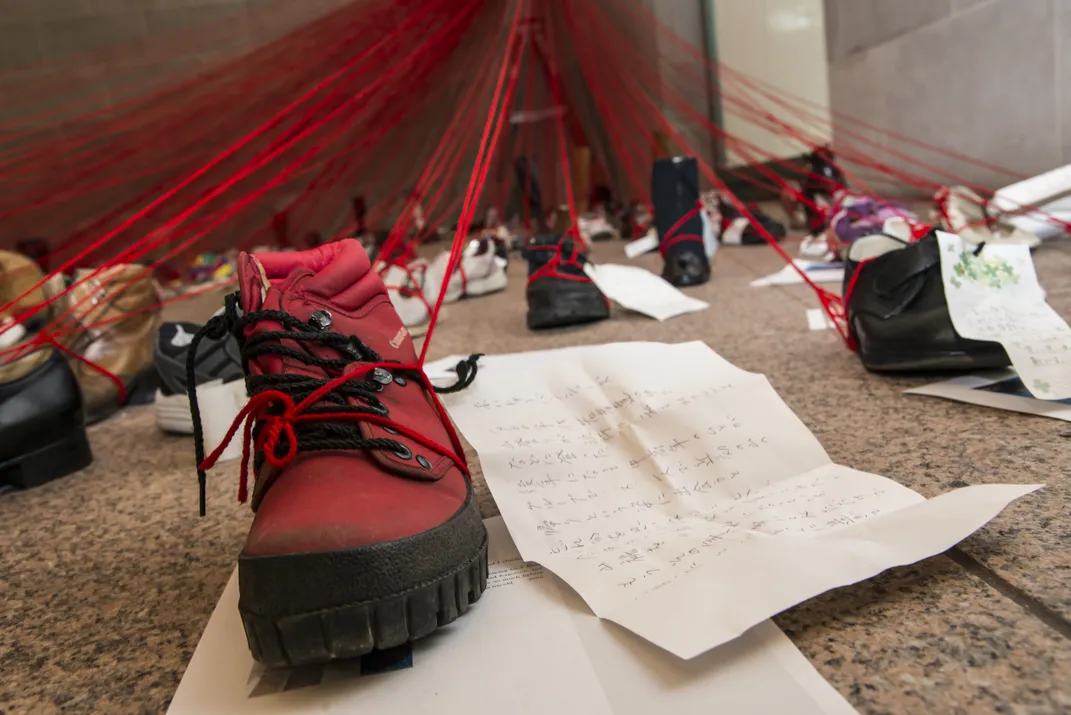What’s In a Shoe? Japanese Artist Chiharu Shiota Investigates
An artist takes on the soul in the sole of your shoes in an exhibition at the Sackler Gallery of Art
/https://tf-cmsv2-smithsonianmag-media.s3.amazonaws.com/filer/df/ff/dfffe736-8600-4991-b45c-12cf2246d2a7/perspectives-_chiharu_shiota10.jpg)
Hundreds of unpaired shoes currently fill the pavilion of the Arthur M. Sackler gallery, but it's no ordinary lost and found. The shoes, each tied to a strand of red yarn, make up an installation by Japanese artist Chiharu Shiota for the museum's annual "Perspectives" exhibition. The installation opens Saturday, August 30, and will be on view through June 7, 2015.
Shiota's installation deals with how familiar objects gain and lose meaning, and what an object says about its owner. The artist describes objects such as shoes as acting like a “second skin,” containing the imprint of a person. “I was living in Germany and I went back to Japan and I put on my older shoes," she says. She found that her once familiar shoes no longer fit. "I was thinking, what is this gap between my feeling and my shoes, and I wanted to know." Shiota decided to explore that question through art and began asking around for shoes from friends, in newspapers, and on social media. She received 2,000 pairs.
The Sackler installation, tailor-made to the space, consists of 350 shoes, each tied to a handwritten note about its owner. "It is concerning the absence of the body," curator Carol Huh says about the installation, "and how objects can resonate with some sort of absence."
One shoe belonged to a boxer who wore it while training. A religious pilgrim wore another during visits to 33 temples.


"These are shoes with which I happily supported myself working on a small plot of land and producing lots of vegetables," says one note, translated from Japanese. Another one: "At the time when I took my father to the hospital he was wearing these shoes. After going to the hospital he lost consciousness. He did not wake up."
“I’m working always with space and when I come here, I think it’s a very nice red color," Shiota says about the Sackler pavilion. The shoes radiate out from between two walls. Red yarn extends from each shoe and the hundreds of strands—four miles long—meet at a point in the corner. Shiota and Huh say the yarn symbolizes the connection between humans, which can be terse, tangled or cut.
“It’s a highly accessible work because it involves every day objects, very familiar objects, but a kind of object that you don’t think very much about when it’s in use," Huh says. "But when it is taken out of use, when it's non-functional," she adds, "it starts to take on a different kind of meaning.”
Shiota was born in Osaka in 1972 and has lived in Berlin since the 1990s. Her work often takes the form of large-scale installations and incorporates used objects and yarn. The original version of her “Perspectives” installation appeared in Japan in 2008.
The "Perspectives" series began in 2003 and highlights a single artist, usually with a single work. Shiota is the first Japanese artist showcased since the inaugural show, which featured Yayoi Kusama. "Perspectives: Chiharu Shiota" will be on view through June 7, 2015.

/https://tf-cmsv2-smithsonianmag-media.s3.amazonaws.com/accounts/headshot/MAx2.jpg)
/https://tf-cmsv2-smithsonianmag-media.s3.amazonaws.com/accounts/headshot/MAx2.jpg)